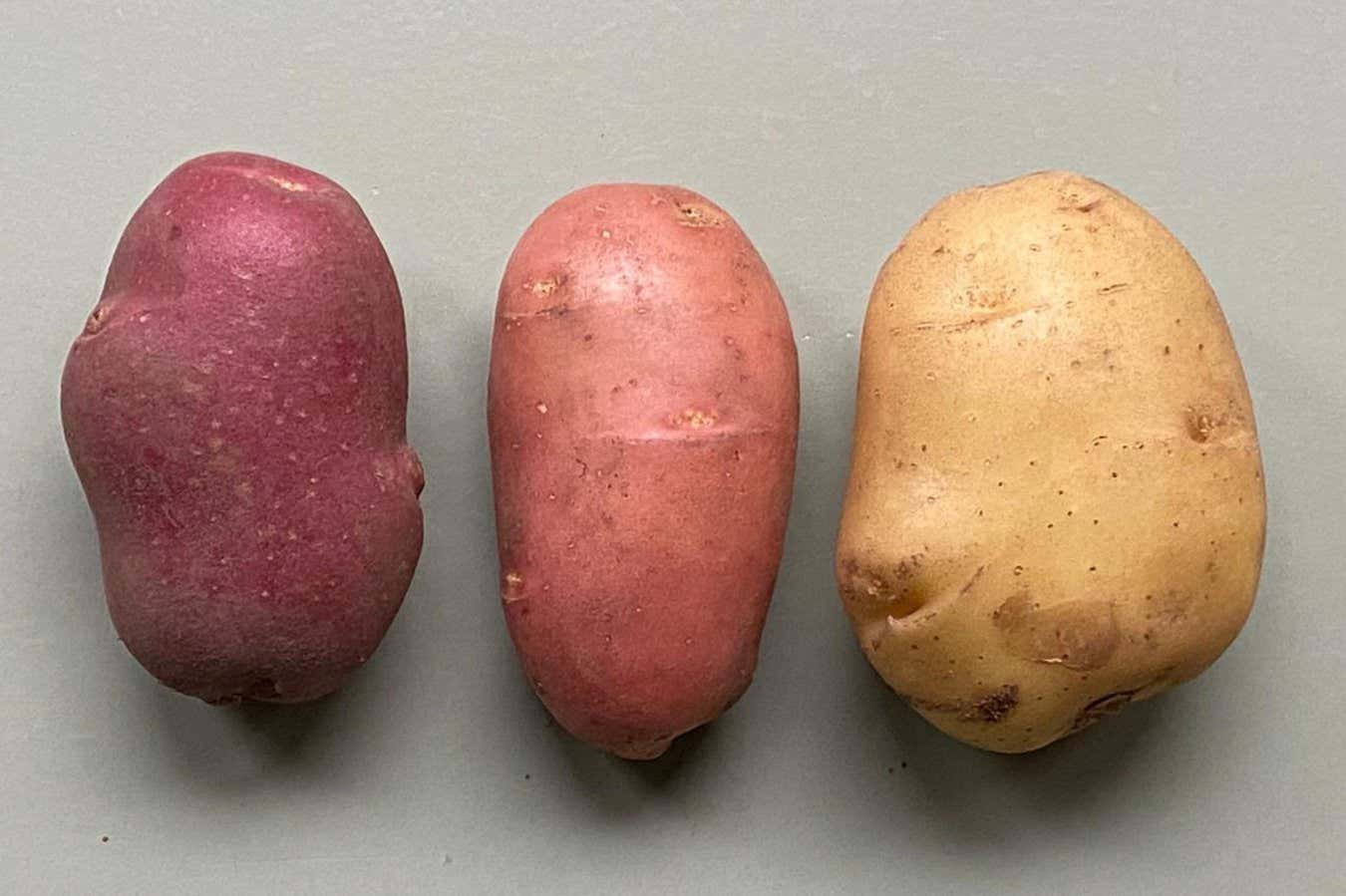A company in the Netherlands says it has perfected a way to create “graft chimeras” with the skin of one plant and the innards of another
By Michael Le Page
2 April 2025
KeyGene’s new potato variety (centre) has the skin of Pimpernel (left) and the flesh of Bintje (right)
Courtesy of KeyGene
A new technique for creating fruit and vegetables with the skin of one variety and the flesh of another could make crops more resistant to pests and droughts.
A lot of the fruit and vegetables we eat comes from grafted plants created by cutting off part of one plant and replacing it with part of another. What makes grafting useful is that even plants that are too distantly related to hybridise can be grafted together. For instance, a desirable variety of fruit plant can be grafted onto a rootstock of another type that is resistant to pests and diseases.
Read more
Lab-grown meat could be 25 times worse for the climate than beef
Advertisement
Very occasionally, a shoot arises from the junction between grafted plants that is a strange mix of the two – called a graft chimera – with the outer layer of one plant and the insides of another. This can happen because shoots develop from three distinct layers of stem cells at their tip, one of which forms the skin of the plant. By chance, shoots from a graft junction can end up with a mix of stem cell types from the two plants.
Normally, creating a certain type of grafted plant requires performing a graft for each one you want to cultivate, so making large quantities is taxing. But graft chimeras can be propagated by taking cuttings from them or simply from their tubers, which would make them more desirable.
However, while researchers have occasionally deliberately created graft chimeras, it isn’t easy. Many of the known graft chimeras, such as the Bizzarria citrus, are a very rare accidental byproduct of conventional grafting.
